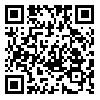
International Journal of Industrial Engineering & Production Management
Iran University of Science and Technology
Mon, Sep 16, 2024
[Archive]
Volume 20, Issue 2 (IJIEPM 2009)
2009, 20(2): 45-56 |
Back to browse issues page
Download citation:
BibTeX | RIS | EndNote | Medlars | ProCite | Reference Manager | RefWorks
Send citation to:



BibTeX | RIS | EndNote | Medlars | ProCite | Reference Manager | RefWorks
Send citation to:
Zegordi S H, Bohlouli E. Group Scheduling with a learning effect in the cellular manufacturing system. Journal title 2009; 20 (2) :45-56
URL: http://ijiepm.iust.ac.ir/article-1-256-en.html
URL: http://ijiepm.iust.ac.ir/article-1-256-en.html
, Zegordi@modares.ac.ir
Abstract: (12265 Views)
The group scheduling problem in the cellular manufacturing system is comprised of two levels of scheduling. At the first level, the sequence of parts in each part-family is determined, and then at the second level the sequence of part-families is determined. In this paper, the flow shop group scheduling is investigated in order to minimize the makespan. In traditional group scheduling problems, the parts processing times of are assumed to be constant and independent of the job sequence. This assumption is impractical in many situations because a worker’s ability and skill improve as a result of repeating the tasks, hence the part processing times decrease. This phenomenon is known as the learning effect.In this paper, a position-based learning model is used in the cellular manufacturing system in which each part processing time is dependent on its position in the parts sequence of part-family. The group scheduling problem is modeled with position-based learning effect and the part-families sequence-dependent setup times. Two different genetic algorithms and a heuristic method are developed to solve this problem and evaluated by the test problems. Numerical results obtained from evaluation of the proposed solution methods reveals that second genetic algorithm is better than other proposed methods regarding quality of the solutions.
Type of Study: Research |
Subject:
Other related Industrial and production reserach subjects in which has direct relation to the state-of-the art of the IE
Received: 2010/06/29 | Published: 2009/08/15
Received: 2010/06/29 | Published: 2009/08/15
Send email to the article author
| Rights and permissions | |
 | This work is licensed under a Creative Commons Attribution-NonCommercial 4.0 International License. |




